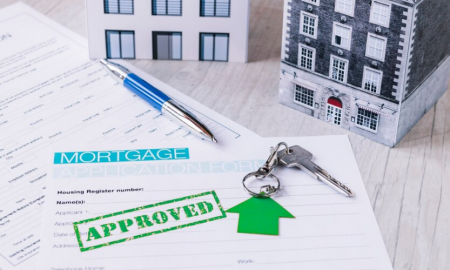
Everything You Need to Know About Reverse Mortgages

Imagine if your home, your cozy refuge from the world, could also be your golden goose. No, it won’t start laying eggs, but through a financial arrangement known as a reverse mortgage, it can provide a steady flow of cash. Sounds intriguing?
What is a Reverse Mortgage?
In the simplest terms, a reverse mortgage is a loan. But here is the twist: Instead of you making payments to the lender, the lender makes payments to you. It is like the mortgage world turned upside down!

KS / Pexels / Essentially, a Reverse Mortgage is a home loan where you DO NOT have to pay your loans as long as you live in your home.
Based on your home’s value, your age, and interest rates, you can tap into your home equity without having to sell your home or take on monthly mortgage payments. However, the loan does become due when the last borrower moves out, sells the home, or passes away.
Who Qualifies?
Reverse mortgages are designed for homeowners who are 62 years or older, have significant equity in their homes, and are looking for additional income during retirement. It is a particularly appealing option if you plan to stay in your home for the foreseeable future.
What are the Major Types of Reverse Mortgages?
There are a few kinds of reverse mortgages to choose from, each with its own set of rules and benefits.
Home Equity Conversion Mortgages (HECMs)
HECMs are the most popular type and are federally insured. They offer the flexibility of choosing how you receive your funds. Whether it is a lump sum, monthly payments, a line of credit, or a combination.

Mart / Pexels / HECMs, Proprietary Reverse Mortgages, and Single-Purpose Reverse Mortgages are the three major types of Reverse Mortgages.
Proprietary Reverse Mortgages
These are private loans that can offer larger advances if you have a higher-valued home. They are not federally insured and typically come with higher costs.
Single-Purpose Reverse Mortgages
Offered by some state and local government agencies and non-profit organizations, these are the least expensive options but can only be used for a specific purpose, like home repairs.
How Does it Work?
The process involves a few key steps:
- Assessment and Counseling: To ensure you understand the ins and outs, you will undergo a financial assessment and mandatory counseling from a HUD-approved counselor.
- Application and Approval: Just like any loan, you apply and get approved based on your age, home value, and equity.
- Receiving Funds: Choose how you want to receive your funds. Remember, the amount you can borrow depends on several factors, including your age and home value.
However, no monthly payments are due as long as you live in your home. The loan is repaid when you sell, move out, or pass away.
Pros and Cons
Like any financial decision, there are both advantages and disadvantages to consider.
Pros
- Flexibility: Choose how and when you receive your funds.
- Stay in Your Home: Continue living in your home while accessing its equity.

Scott / Pexels / The biggest benefit of Reverse Mortgages is you can continue living in your home, with access to your home’s equity.
- Non-Recourse Loan: You (or your heirs) will not owe more than the home’s value when the loan is repaid, even if the home’s value drops.
Cons
- Fees and Interest: These loans can have high upfront costs and interest rates, which means less equity in your home over time.
- Impact on Estate: Your heirs will inherit less, as the home will likely need to be sold to repay the loan.
- Eligibility for Government Benefits: Receiving funds from a reverse mortgage could affect your eligibility for certain government benefits.
Making the Decision
Deciding on a reverse mortgage is a big move. It is essential to weigh the immediate benefits against the long-term impact on your finances and estate. So, consulting with a financial advisor, considering alternatives like downsizing or a home equity loan, and thoroughly understanding the loan’s terms and conditions are crucial steps.
More inReal Estate & Mortgage
-
10 Unique Things to Do in Tokyo for Couples in 2024
Tokyo is a city where the extraordinary is the norm. From towering skyscrapers to tranquil gardens, this bustling metropolis offers an...
June 13, 2024 -
How to Make Money on TikTok – 8 Proven Strategies
TikTok isn’t just a platform for viral dance challenges and funny skits anymore. It’s a goldmine of opportunity for creative minds...
June 6, 2024 -
Tech Giant Cisco Likely to Lay Off ‘Almost 350’ Employees As Part of Its ‘Restructuring Plan’
Is your favorite tech company feeling the pinch? Recent reports suggest that Cisco (CSCO) is planning to lay off ‘almost 350...
May 31, 2024 -
How Many Mortgages Can You Have? Understanding the Limits
Are you pondering the idea of delving into the realm of multiple mortgages? Whether it’s for expanding your property portfolio, securing...
May 23, 2024 -
What You Ought to Know About Dominican Republic Rum
When you think of the Dominican Republic, your mind might drift to images of beautiful beaches and vibrant dance rhythms. But...
May 16, 2024 -
Are Mobile Homes Worth Investing? A Deeper Look
Are mobile homes a good investment? This question often pops up among potential homeowners and investors alike, looking for an affordable...
May 9, 2024 -
10 Best Stocks to Invest in 2024 for Smart Investors
In a world where economic growth seems to be hitting the brakes, the hunt for the best stocks to invest in...
April 30, 2024 -
Will Breaking a Lease Affect Your Credit? The Real Impact
Breaking a lease isn’t just about packing up and moving on; it’s a decision that can have lasting financial implications. While...
April 23, 2024 -
Is Traveling a Hobby? Exploring the Reasons and Ways to Travel More
Have you ever scrolled through social media and stumbled upon the question, “Is traveling a hobby?” It’s a thought-provoking query that...
April 16, 2024















You must be logged in to post a comment Login